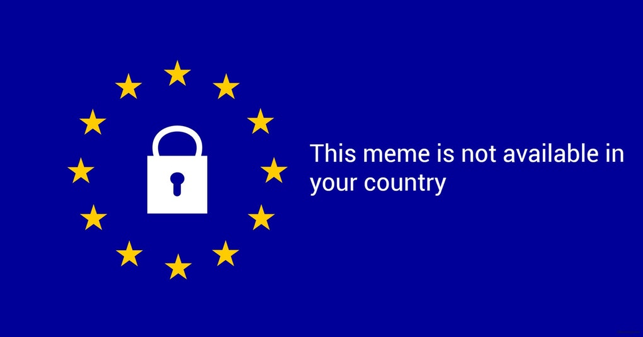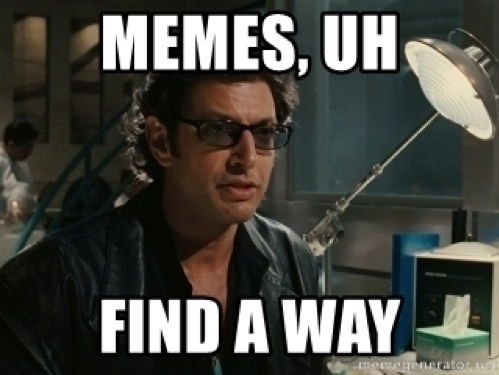
Ondřej Procházka on Digital Culture in 2018 & 2019
Digitalization and digital culture are reshaping not only the world we live in, but also the social sciences and the humanities in particular. Diggit Magazine was curious about the impact of digital culture on academia. Now, at the end of the year, we at Diggit Magazine thought that we could use the traditional end-of-year question-format as a pretext to seduce researchers from all over the world and from many different sub-disciplines to reflect on this impact, and to look back and forward.
Instead of the traditional end-of-year questions, we thus asked them about the impact of digital culture on their research practice and their field of research in general. Of course, we also asked them what they expect to happen in 2019. So, we reinvented the traditional end-of-year questions, reframing them within an academic, and more specifically, a digital culture studies perspective.
In this interview, we ask, Ondřej Procházka to reflect on the impact of digital culture on his field. Ondřej Procházka is a PhD candidate currently situated at Tilburg University, Department of Culture Studies. His research focuses on communities forming around Internet memes on social media and their sociolinguistic aspects.
When did you notice that digitalization was substantially reshaping your research field?
My research concerns negotiation of sociolinguistic normativity in communities on social media that create, spread or otherwise interact with multimodal cultural artifacts generally known as internet memes. My interest in the communicative practices involving memes started during my BA studies in English philology around 2011-2012. At the time, I was coming to terms with the intricacies of phonetics and phonology, the taxonomies of morphological paradigms and the convulsions of syntax diagrams (I still remember the violence I visited upon my textbook, desperately shouting ‘YOU CAN’T MAKE ME TREE THIS!’). However, back then I noticed that memes had taken hold not only in my feed on social media, but also in the everyday communication with my friends. The problem was that, as an aspiring linguist, I could hardly explain what was going on.
Despite their plain design, memes started to pour from highly niched image- and messageboards, such as 4chan or Reddit, to mainstream media as more or less inconspicuous form of commentary, imitations and parody, which tapped into founts of creativity transgressing the bounds of what I had taken for granted. Pieces of popular culture as well as stereotypical imagery of everyday life have been captured in ready-made graphic-textual, acoustic, video, choreographic and other patterns to be easily modified and recontextualized anywhere in digital discourse on an unprecedented scale. But to understand the meaning of such practices, or more specifically, to understand (or at least try to understand) how people make, negotiate and challenge meaning in digitalized communicative conduct involving memes – how memes become recognizable and acted on – I had to abandon my preconceptions about language.
memes testify to the changing nature of communicative practices in digital discourse
I think my epiphany has been that the relationship between form and meaning does not entirely spring from and cannot be measured solely against dictionaries or grammar books, nor does it reside in the temporal answers of teachers and other licensed arbiters of language, or their linguistic models. It is out there, largely unpredictable and unstable – always in-between – arising out of and being derived from the social interaction one has with one’s fellows, as Herbert Blumer noted long time ago. Although one might add that nowadays, online social interaction features algorithmic, artifactual and other non-human entities regimenting the digital communication and exceeding the role of a mere intermediary.
Can you give a concrete example of the impact of digital culture on your research domain?
It is hard to pick one specific example. Memes harness a vast potential for capturing and framing virtually any aspect of everyday life. They instantiate the blending nature of the online and offline as an intersection where many ‘offline’ practices, events, spaces, persons and experiences are captured and re-captured by online affordances allowing for creative and innovative use of semiotic resources. Nevertheless, I would like to highlight two aspects I’m interested in.
On the one hand, memes testify to the changing nature of communicative practices in digital discourse, most notably the incremental use of multimodal resources as well as increasingly more complex forms of linguistic expression breaking boundaries between what we have traditionally seen as ‘languages’, registers, styles and genres.
On the other hand, memes also operate as agents of globalization. They provide recognizable patterns and scripts to be impregnated with meaning in local, situated settings while drawing on global trends traversing cultures, societies and even time. To give a concrete example, I’m sure most of us still remember the endless variations, references and takes on the ‘horse dance’ from 2012 K-pop single hit Gangnam Style or the Keep Calm and Carry On poster first used in WWII Britain that has recently reappeared in various derivations inscribed on mugs, t-shirts and other items.
My research is, however, focused on Facebook meme pages devoted to Countryball meme comics. Countryballs represent sphere-shaped characters covered in colours denoting the flags of individual countries whose interaction is usually based on the satirical reinterpretation of geopolitical events and international ‘drama’ through the prism of national and socio-cultural stereotypes.

Similar to other memes, Countryball continues to inform us about the prevailing sentiments and attitudes of the ‘networked publics’ (to borrow a term from danah boyd) in real time. For me, memes are the zeitgeist of our times and their uptake offers valuable insights and interesting research venues in the online-offline nexus – from the new modes of interaction to the changing relationships between humans and technologies, grassroots organization and (post-)panoptic sociality, among many others.
What was the most remarkable change in 2018 regarding digital culture and your research?
I don’t think there have been any ground-breaking changes in memetic flows in 2018 – most memetic formats simply come and go, although they never truly die as they become part of a shared ‘memetic reservoir’ and can resurface anytime (see e.g. the Know Your Meme website documenting developments of particular memes). There are, however a few things to note.
Being interested in what people do with memes and how they read them, we have witnessed a slow change from memes being conceived as a form of humorous (often in-group) expression to memes being predominantly employed for open political expression. Events of geopolitical significance generate pulses or spikes in memetic activities that may surface to wider public attention. For example in 2016 we saw what is sometimes referred to as ‘The Great Meme War’ during the US presidential elections earning a note on Wikipedia.
In 2017 memes were spearheading a line of parodic and sarcastic critique levelled at the reactions of European politicians to the Migrant crisis (see the Countryball satire above).
Finally, in 2018 the European Parliament approved a new controversial copyright directive designed to place more responsibility on online content sharing platforms to prevent copyright violation. The problem lies with its Article 13 (dubbed as ‘meme ban’) geared towards implementing ‘upload filters’ that could potentially dismantle participatory culture and become a ‘tool for control’.

Under the proposed Article 13, the content hosting platforms, such as social media, would be required to automatically filter and block any unauthorised use of protected content. Memes, much like other user-generated content, are allegedly in danger, as they often contain parts of copyrighted material (think of parodies, remixes, mash-ups, covers etc.), and could be subjected to censure as false positives.
What do you expect will change in 2019 regarding the impact of digital culture on your research?
Personally, I don’t expect any significant changes in 2019. I think the final language of the new copyright directive will reflect its mounting criticism before coming into effect, and there will be no serious consequences for memes and those who enjoy them. Either way,
